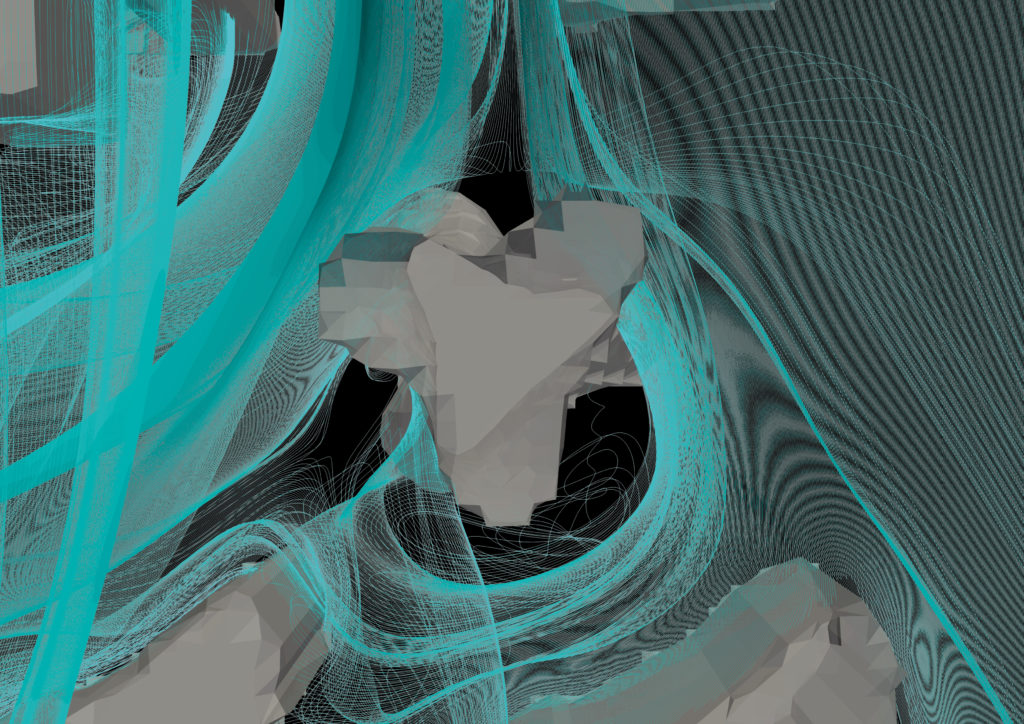
This project depicts a study case considering a series of climatic aspects relevant for architectural strategies. This analysis occur in a subtropical humid zone located in Porto Alegre, extreme south Brazil, comprehending extreme temperatures and constant high humidity, the insertion of architecture in this climatic zones has to respect its natural constraints and be sensible to interpret its specificities.
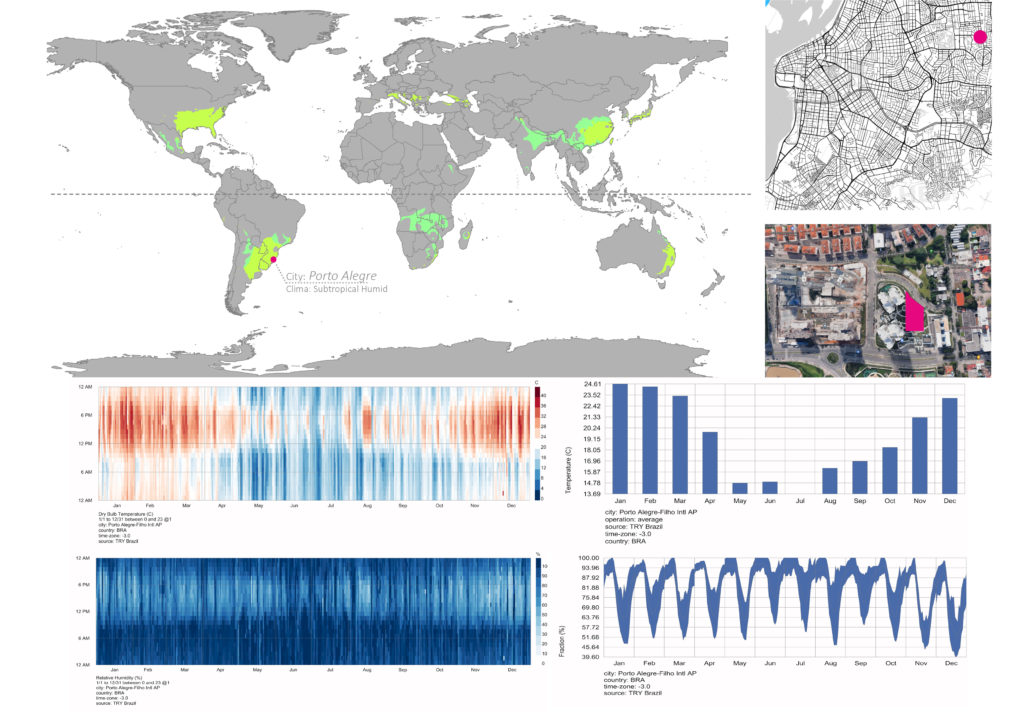
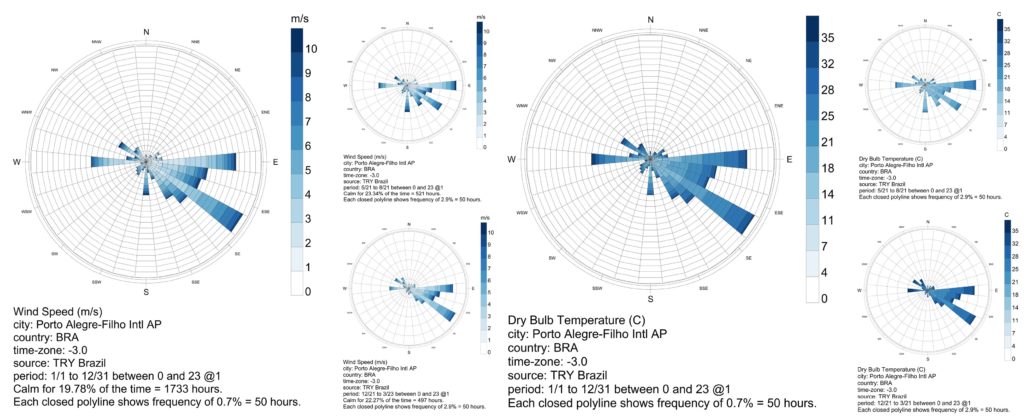
The average temperatures of this context varies from +40ºC and 0ºC in between summer and winter with humidity constantly reaching 80% or more. The seasonal extremes reaching +45ºC to -9ºC every year and humidity at 100%, which intensifies the feeling of temperature. Architectural solutions depend on joint solutions in this case scenario, the intensification of heat by humidity, wind frequency and direction making wind essential to mitigate through strategic cross ventilation.
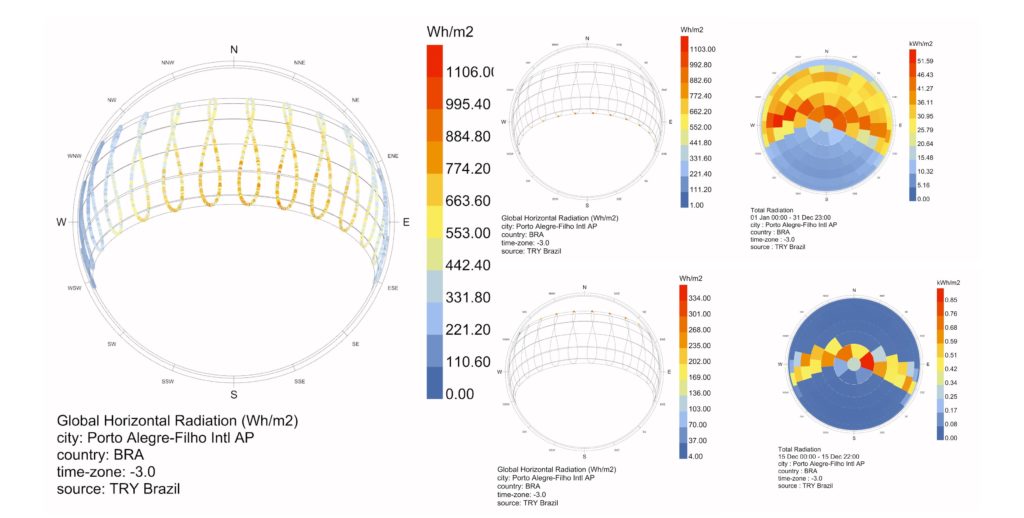
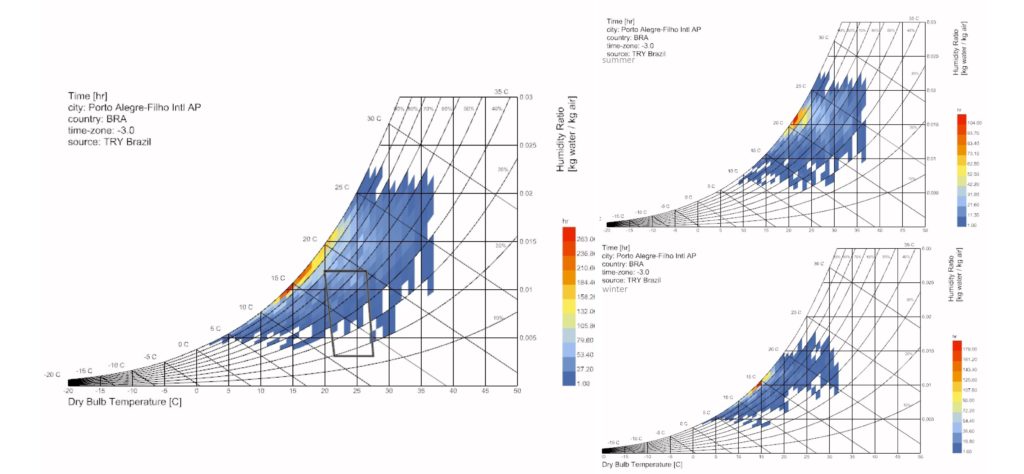
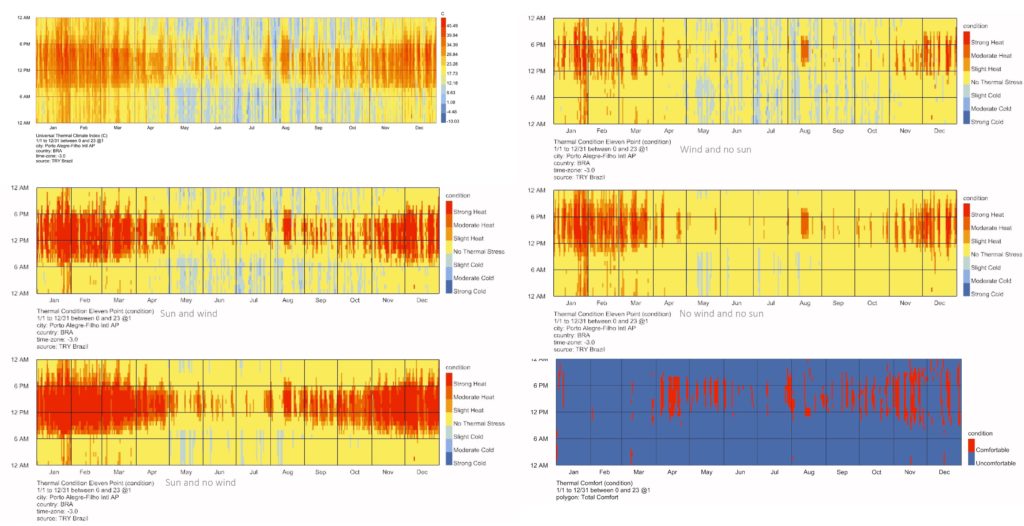
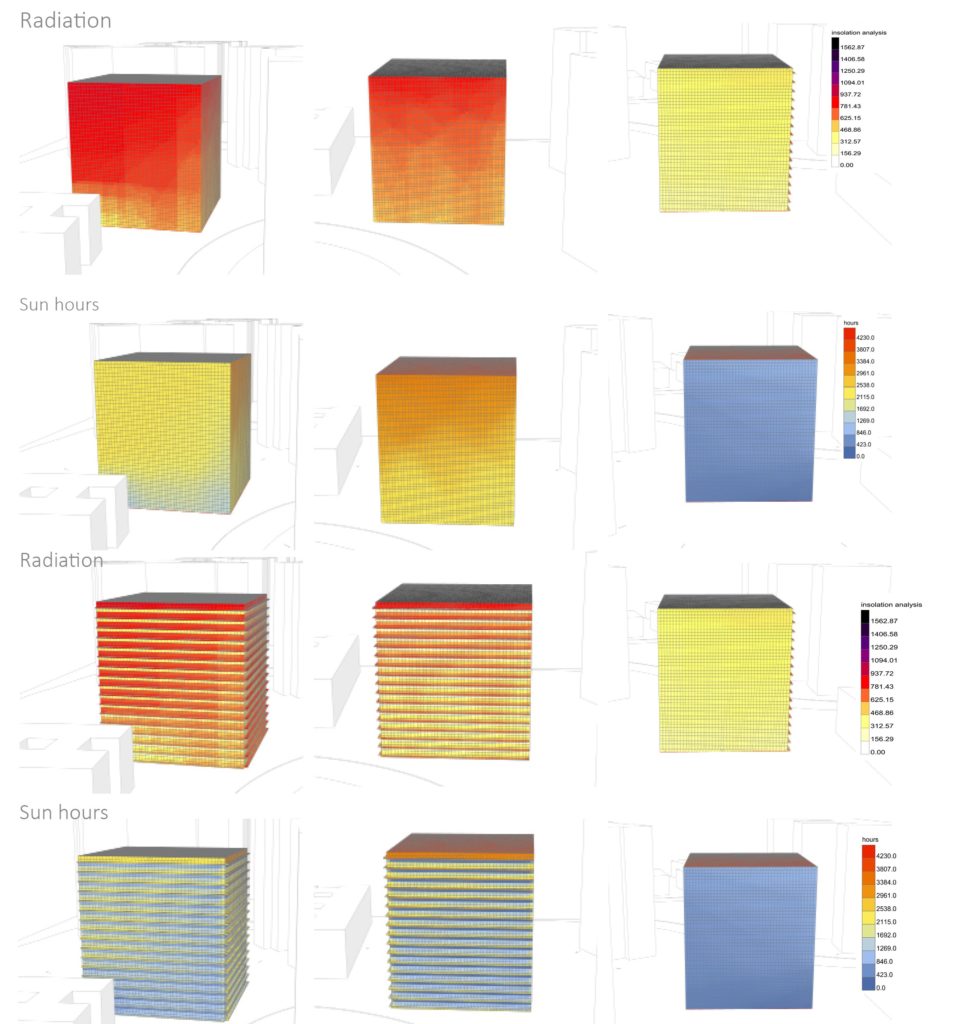
Sun, radiation and comfort analysis describe abundance of sun hours and radiance, allied with extreme heat and cold and intensified by temperature, in a context where the majority of building derive from a geometrical shape, using balconies to mitigate the effect of radiation. The results of these characteristics, inserted as they are, reassure the need for a deeper analysis and more elaborate plans to deal with climatic aspects. The following case study morphed the buildings’ envelope in order to concentrate the radiation, followed by overlaying shading elements, resulting in lower incident radiance, yet keeping the inner illuminance.
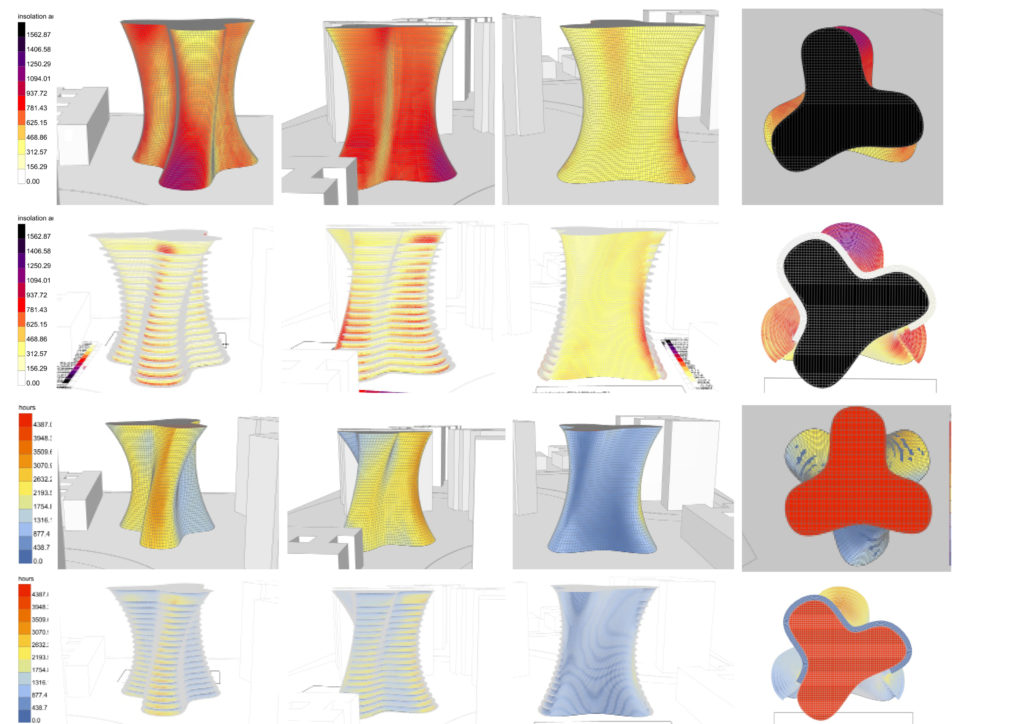
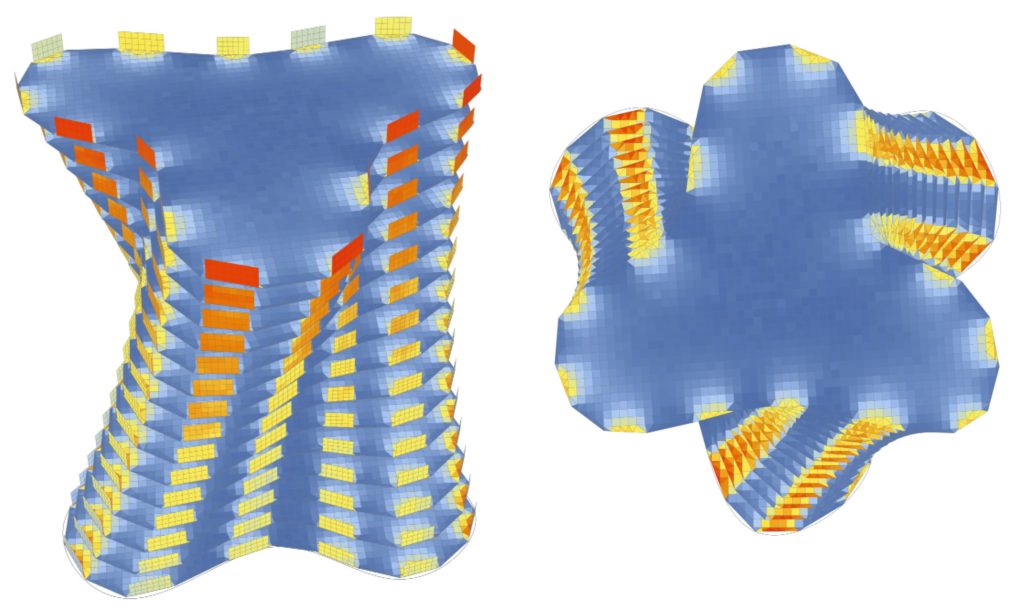
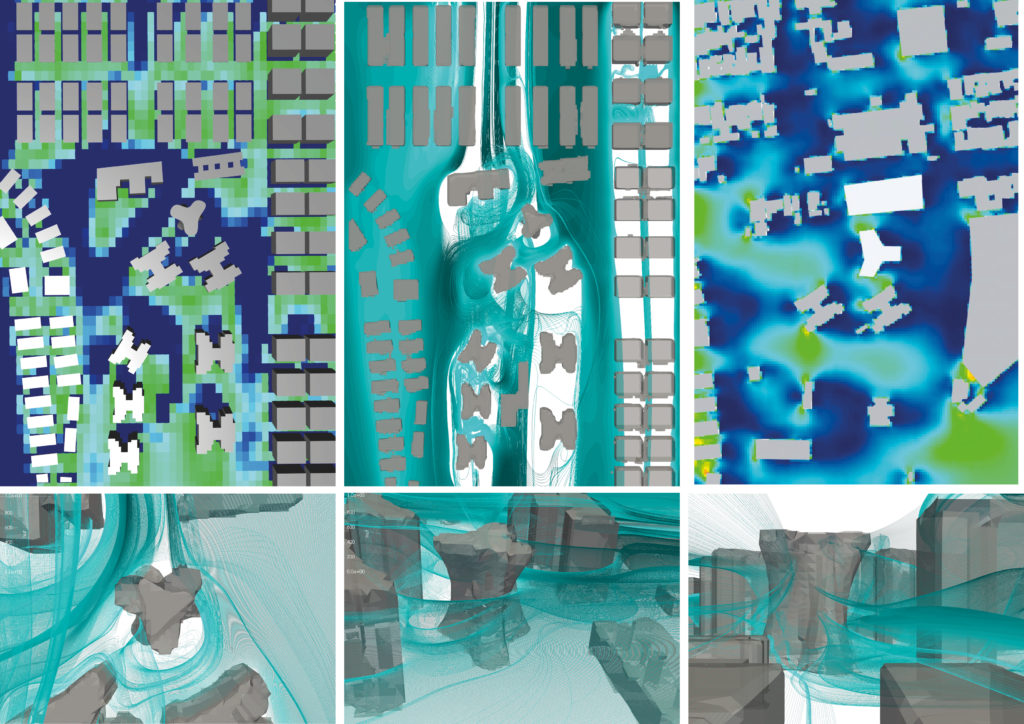
The comparison between wind analysis considered a extreme case scenario which correspond to winds of 27 m/s regarding the frequent storms characteristic of this region and the turbulent zones generated by this extreme event. Wind is a critical aspect to structural stability and user comfort, which would demand a deeper study of each section of facade and structure together. All the results converge to a similar critical area to be explored in this specific project, the standard treatment in this geolocation is treatment of north facades for mitigation, however, this study shows a concentration of critical conditions at northeast, proving the importance of computational tools to produce specific results, mainly when connected to complex shapes.

